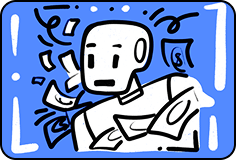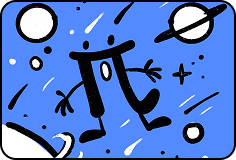Category: Cognitive technologies
Football: the evolution of the most important unimportant thing
“In football, the worst things are excuses. Excuses mean you cannot grow or move forward”
Pep Guardiola, head coach of Manchester City
Hello, dear football fans and everyone who has accidentally tuned into the broadcast of the most grandiose friendly match!
Today’s showdown will take place on the field of The Global Technology stadium, where the legendary European and Latin American national teams will face off. The starting whistle will sound in an hour, but the spectators have already filled the stands and are cheering so loudly that it feels as if the match is in full swing. The variety of flags from different countries and regions, jerseys with players’ names, scarves, posters requesting autographs—all these create an incredible atmosphere at the stadium that gives everyone goosebumps. When you see such a scene, you can’t help but recall the words of the Russian commentator Vladimir Yeryomin: “Love football, and it will surely reciprocate.” At matches of this scale, love for the sport is literally in the air, and it’s a fantastic feeling!
Pre-match warm-up
Can you hear that? The European fans’ section just erupted with cheers and applause so loud that a small seismic activity ran across the field. All because their idols—players from the European legends team—are starting their traditional pre-match warm-up. One of the players cast a critical glance at the pitch, assessing the quality of the grass where he and his teammates will be playing against Latin American stars today. But there’s no reason to worry—at The Global Technology stadium, the field is excellent and the grass is natural. Specially trained staff carefully cut the lawn to an optimal three centimeters, and underground sprinklers irrigated the turf to ensure perfect glide, softness, and even a slight coolness—which will definitely come in handy during this tropical-style game we’re about to witness. Many now-famous footballers began their journey on improvised fields made of mud, sand, stones, or asphalt… But we seem to have gotten sidetracked.

Now legends from Latin America are following the European team onto the field. Their fans are greeting them with deafening cheers. In one section of their fan zone there’s a real mini-orchestra made up of brightly dressed musicians with banjos, trumpets, and maracas—they will keep spirits high throughout the match with their music. It’s safe to say that the next ninety minutes, not counting added time, will be lively. Whether they’ll be equally exciting in terms of outcome remains to be seen soon enough.
Players from both teams are spread across the field and have begun their cardio exercises to raise their heart rates. No one interferes with each other because the size of the stadium’s pitch conforms to universal standards: 105 meters long and 68 meters wide—established by FIFA in the 2000s. You probably know that earlier football fields varied greatly in size; some were so small that duels and tackles far outnumbered attacks and accurate passes. For many Latin American players who often played on smaller fields, a love for contact—sometimes quite rough—remains part of their DNA today.
Meanwhile, some players are already practicing technical drills with the ball, showcasing short passing combinations. Let’s observe goalkeeper warm-ups—Italian Gianluigi Buffon and Uruguayan Fernando Muslera are working on various saves within their goal areas and testing coordination during jumps. Nearby, Welsh footballer Gareth Bale is adjusting his torn socks. No, Bale didn’t forget to buy new socks before the match; these cuts around his calves are intentionally made to improve blood circulation, prevent cramps, and reduce injury risk due to pressure and tension around his ankles. Many English footballers—including young talents like Jude Bellingham and Bukayo Saka—use similar tricks for better performance.
Take a look at former German attacking midfielder Mesut Özil practicing long-range shots or former Uruguayan center-back Diego Godín working on headers by kicking balls into a net. Both retired before age forty due to frequent injuries and fatigue but remain physically impressive. Adidas—admit it—is it all about your smart insoles? Yes, friends, you heard right: smart insoles are one of Adidas’ latest developments in collaboration with Google and EA Sports. They contain embedded chips that allow players to track their condition: distance run, speed, number of shots taken along with their force. Could this be part of what makes footballers successful?
The players finish their pre-match warm-up and head into the locker rooms but not for long. Soon they’ll return onto the field to show us high-class football for which we’ve gathered here today. For now, let’s take a short break for advertising, catch our breath, and grab some snacks—don’t go anywhere; it’s about to get exciting!
Getting onto the field
We return to the stadium after a commercial break. One after another, players from Europe’s legends team and Latin America’s legends team emerge from behind-the-scenes areas onto the pitch amid thunderous applause from fans worldwide!
Cristiano Ronaldo’s right foot steps onto the grass first—immediately followed by an explosion of “SIIIIUUU!” from fans—Ronaldo’s signature chant as he enters play. Like many footballers who are superstitious, he never takes his first step onto a field with his left foot; only right foot—to attract luck.
His eternal rival on this field is Lionel Messi who has his own special ritual: a family breakfast before each game. Interestingly enough, every member of his large family must sit strictly in their designated spot during this meal. According to Messi himself, this routine is his secret for sustained success over many years in professional football.
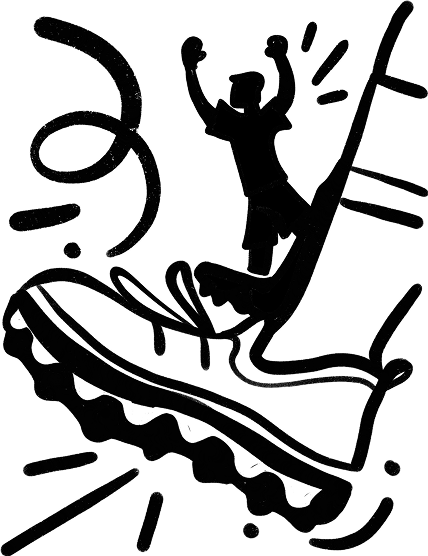
Next onto the field comes the Uruguayan forward Luis Suárez—yes, that notorious player known for biting opponents during matches! How many shoulders and ears have suffered bites from Suárez? It’s frightening to even think about it! Long suspensions didn’t help him kick this strange “habit,” but he now wears a wrist protector on his right arm—usually used after injuries or damage—which he considers a lucky charm after recovering from a serious injury years ago that kept him out for several matches. Will this little trick help him today? We’ll see very soon!
Almost every player has some kind of pre-game ritual: touching the field before stepping onto it for good luck or crossing themselves before entering play—not always out of religious belief but often as quick psychological routines to boost focus and readiness for battle ahead. Even religious players can appear today; the Mexican forward Javier Hernández (known as “Chicharito”) sits on Latin American legends’ bench. He’s known as a devout Catholic who always kneels in midfield before matches to pray—perhaps worth releasing him onto the field just for that touching ritual alone! We’re waiting eagerly!
Let’s hold our breath in anticipation of those final minutes before kickoff—just like a dedicated fan girl holding her poster with a funny yet slightly intimidating message: “I’ll trade my little brother for Ramos’s jersey.” Does Spain’s star defender need her brother? That’s uncertain—but we hope her dream comes true and without her losing any family members!
Introduction of the referees
The captains of both teams have already greeted each other with handshakes and are now listening to the final instructions from the referees. At this moment, we see another football ritual—the coin toss. It’s used to randomly and fairly determine which side of the field each team will defend and who will kick off the game first. Today’s match will be officiated by Italian legend Pierluigi Collina—one of the greatest referees in football history.
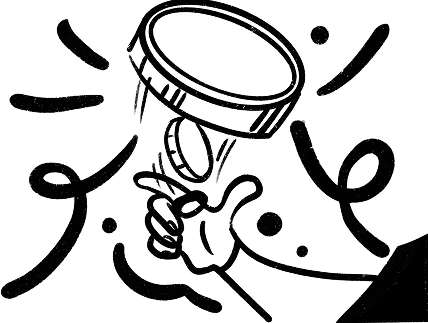
A Belgian assistant referee responsible for substitutions and added time, and two linesmen from Paraguay, whose main duties include monitoring offside positions, throw-ins, corner kicks, and fouls are assisting Collina. In addition to the on-field officials, today’s match is overseen by a Video Assistant Referee (VAR) crew. Before 2010, referees and linesmen bore an overwhelming responsibility—missed penalties for serious fouls in the penalty area, incorrect awarding of penalties that led to teams’ defeats, and offside calls that were only made in clear-cut situations when an attacker was closer to the goal than both the ball and the second-to-last defender. Now, these issues have largely been mitigated thanks to semi-automated video video review technology that allows officials to view specific episodes from multiple angles during the match itself—even in goal areas—enabling them to make accurate decisions in almost all contentious situations. However, lower leagues still don’t use VAR due to financial constraints. The same applies to English football; they’ve only implemented VAR in the Premier League.
If you’ve noticed a camera with a microphone on Pierluigi Collina’s chest, don’t rush to think he’s a modern vlogger. Football is an exciting game, and you’ve probably seen how some hot-headed players lose their temper during matches—disputes with referees, insults towards opponents, inappropriate gestures, and other unsportsmanlike conduct often result in yellow or red cards. Due to language differences and accents, some harmless phrases might be misunderstood by referees as insults. To prevent conflicts and disputes over such issues, FIFA recently proposed that referees wear body cameras with microphones—so that in case of controversy, recordings can be used for decision-making or post-match review.
The referee has already placed the ball at the center circle and raised his whistle to his lips. While he checks his watch for the signal from his colleagues to start the match, we have a chance to admire the “smart ball.” Yes, such technology exists today. It was first tested at UEFA Euro 2024 in Germany—each tournament the ball was embedded with a special chip that allows VAR officials to quickly receive information about ball contact with a player’s hand, crossing boundary lines or goal lines, offside positions, and double touches during penalty kicks. This technology has shown positive results and is now used in many tournaments. However, even then at Euro 2024, it caused headlines and scandals—for example, when it detected an unintentional handball by a Belgian player against Slovakia; as a result, Slovakia’s goal was disallowed. Many still believe Belgium was “robbed” that day. We hope no one will leave this match feeling cheated today—let’s enjoy fair play! The referee blows his whistle! The match begins!
First half
After a brief kickoff sequence in the midfield, the Team Europe Legends possesses the ball. Both teams are playing 11 vs. 11 with five substitutions allowed—a rule introduced during COVID times that has become permanent.
The first minutes are cautious: Busquets makes a passing error but Latin America doesn’t rush into attack. The ball is now with Ramos, then Iniesta; a pass on the flank leads Bale into attack! A feint, another move—cross! Ronaldo jumps—header! Goal! Ten minutes into the game—Europe takes the lead. Classic: Bale’s pass finds Cristiano Ronaldo’s head; his precise shot leaves Muslera no chance.

The response comes quickly: Di María finds Suárez; he passes to Coutinho; then the Brazilian switches play on the flank. Higuaín shoots from distance—Buffon saves! Messi rushes for the rebound; Pépé tightly marks him but Leo does something incredible: “Marseille roulette,” spins around and shoots! Buffon can’t react in time—fans erupt into cheers: it’s 1-1!
At around minute 30 of the game comes the first rough collision: Balbuena fouls Beckham and immediately receives a yellow card. Beckham holds his face after being kicked on his leg—a typical trick: referees might overlook fouls but they stop play if they see “head injury.”
The tradition of showing cards isn’t very old: introduced by British referee Kenneth George Aston. The idea came when he was standing at a traffic light: yellow means warning; red means dismissal—just like on roads. The first yellow card was shown by the German referee Kurt Jensen during Mexico-USSR; the Soviet player Kakhaber Asatiani was the first to receive it. The first red card was issued by Chilean referee Carlos Caselli at the 1974 World Cup. Today there have been no red cards yet but Balbuena needs to be careful.
Next comes the free kick: Özil stands over it along with Busquets and Ronaldo. Özil steps back; Cristiano pretends he’ll shoot but instead Busquets chips over the wall! Muslera leaps but manages to save this shot! Bravo! Both goalkeepers trained with reaction coaches before this match—their efforts pay off.
At minute 41, Rooney takes a shot—just wide of the post! If only the goal had been slightly wider… FIFA rules specify 7.32 meters wide and 2.44 meters high for goals; matches should be fair but neither boring nor too crazy.
Two minutes of added time are played as Latin America launches its final attack: Marcelo—Cáceres—Mascherano—Higuaín! A shot… weakly saved by Buffon again. Long throw-in… then blow of whistle signals halftime break. We need some rest too because things will heat up even more after!
Second half
The second half begins: Özil has been replaced by Ribéry for Europe; Mascherano is replaced by Mexican Hernández for Latin America. As usual, Hernández kneels at the midfield for prayer before entering play. Iniesta presses, the Mexican loses the ball—out.
Meanwhile the dome is closed above the stadium as it starts raining—a possible thunderstorm ahead. In modern times matches aren’t interrupted due to lightning storms anymore—safety comes first.
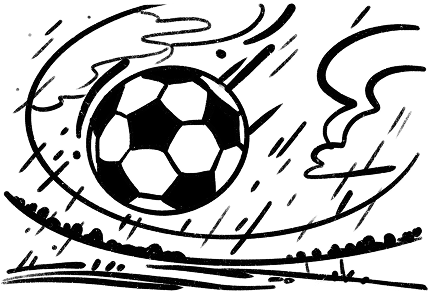
Suddenly—an explosion on the field! Suárez intercepts Ribéry’s pass and charges toward goal; Buffon comes out but misses as Suárez chips over him for 2-1 Latin America lead! The crowd roars wildly—fantastic!
Europeans rush forward trying to equalize; dreams of “scorpion strike” like René Higuita don’t leave fans’ minds but goalkeepers are already busy defending. The match is nearing its conclusion.
The game remains high tempo but harsh moments become fewer: Chiellini stops Messi; passes to Pépé who crosses to Rúben, Rúben to Iniesta… the shot hits the crossbar! A corner kick. Minute 90.
Bale crosses, Ribéry heads the ball, Pepe shoots… off the crossbar! But the attack continues — Ramos retrieves the ball, Marcelo commits a foul, and the referee points to the penalty spot! The final seconds—a penalty kick!
Ramos steps up for the penalty—he earned it himself. He earned the penalty himself, so he’s taking the shot. Makes sense. Approach, a light chip down the middle—”Panenka-style!” The ball hits the net! Goooooal! Yes, a decisive one! 2–2! The final whistle is drowned out by the roar of the crowd.
An unbelievable match—a true legend!
Match end
This incredible football evening has come to an end, and only those who forgot to cancel their plans regret missing it. As the Russian commentator Roman Naguchyev once said: “What if you missed this match for the sake of a date but the girl didn’t even turn into your wife?” We hope that’s not your case, because missing such spectacular football is simply not an option. We’re saying goodbye to you for today, but we’ll definitely meet again at future matches. Keep supporting your team—cheer more often! And stay healthy, friends!
“If you’re in the penalty area and don’t know what to do with the ball, put it in the net and we’ll discuss the options later”
Bob Paisley, Liverpool manager
We’ve ventured beyond the boundaries of time and space. By the way, it’s empty there.
Thank you!



